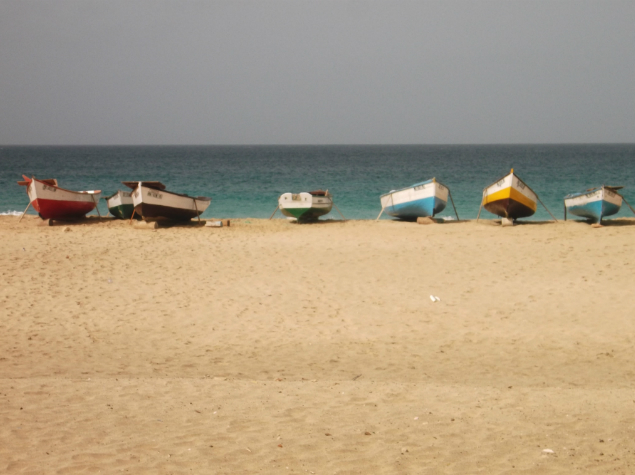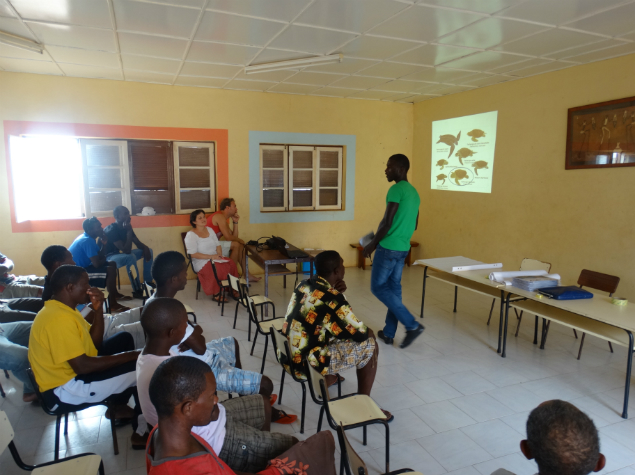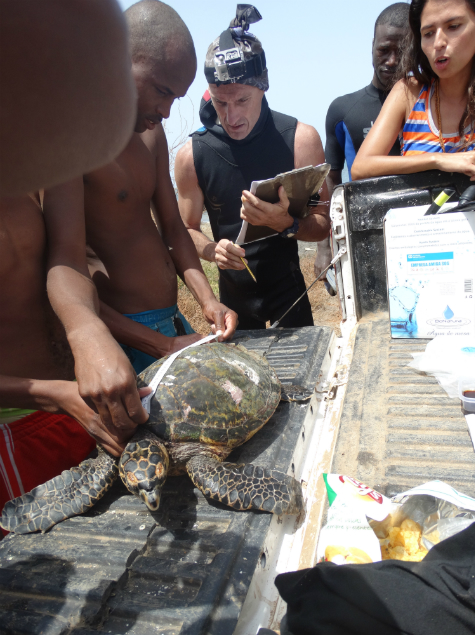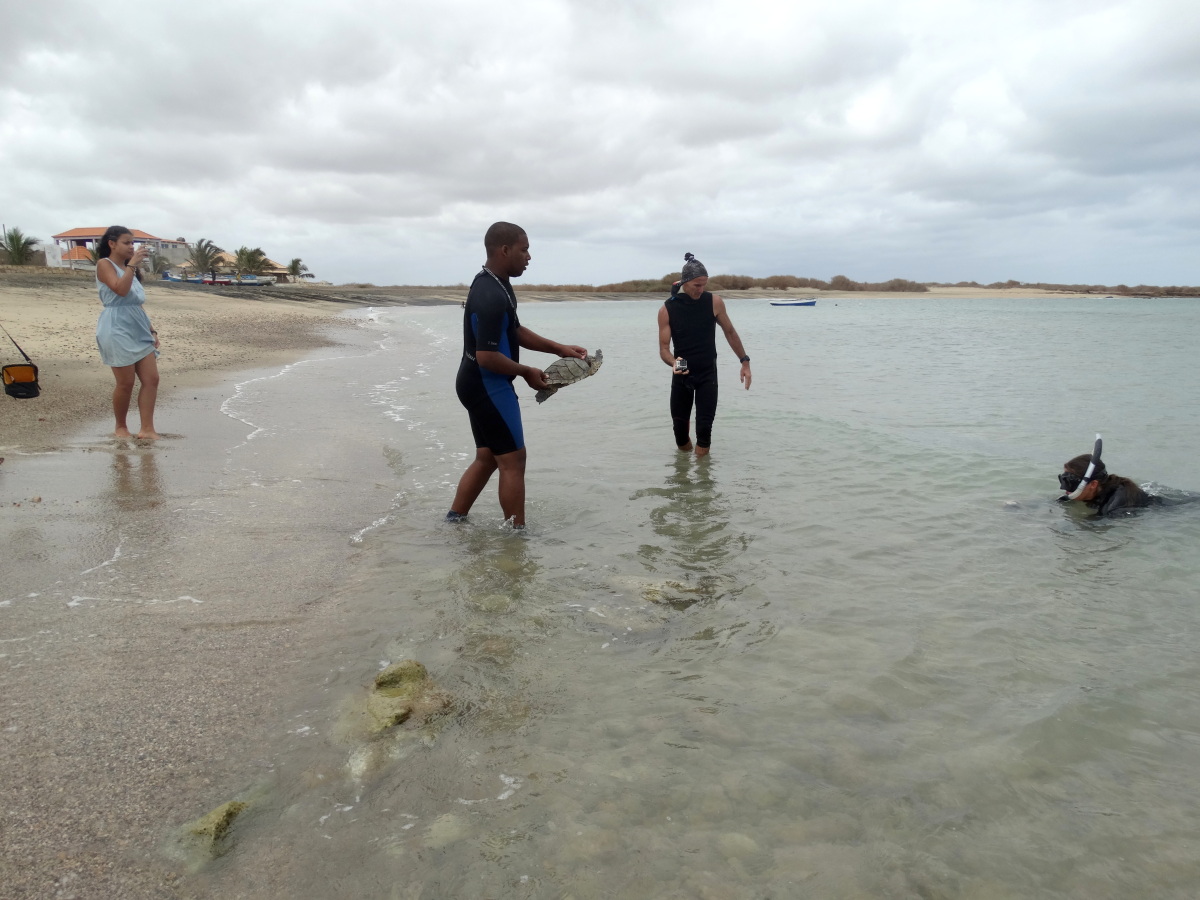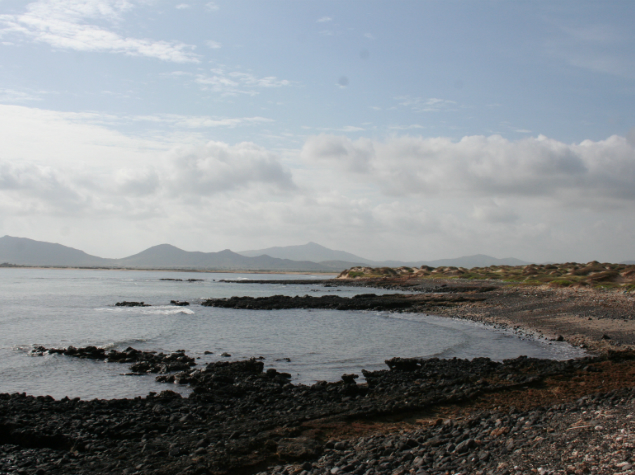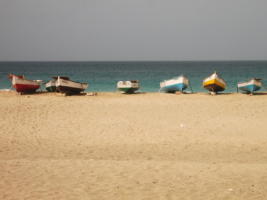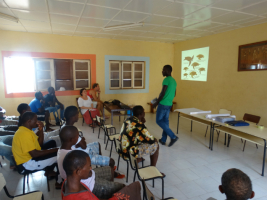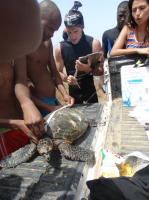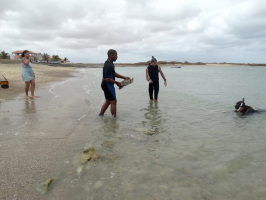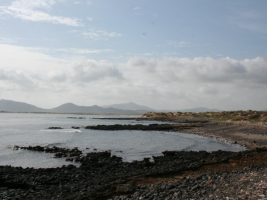Building marine conservation circle in Maio Island
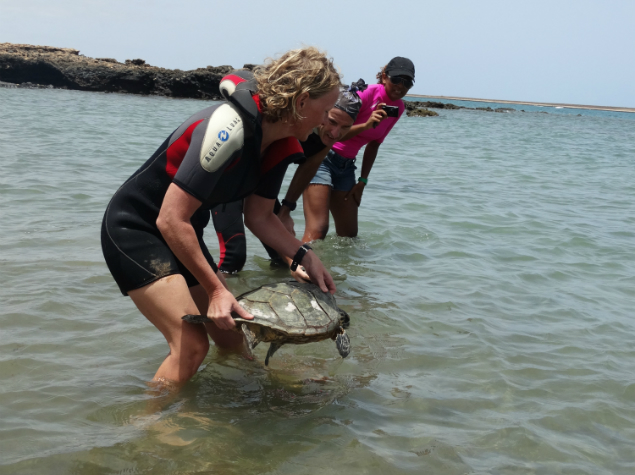
Cape Verde has been recognized as a global hotspot for marine biodiversity. Maio Island is the last remaining rural island in the archipelago that preserved its pristine habitats and wildlife. In 2013, Maio benefited from a significant expansion and establishment of the network of protected areas. Accidental reports by local fishers show that Casas Velhas Marine Protected Area (MPA) is frequently visited by manta rays while Natural Park Norte do Maio is suspected to be an important feeding ground for juvenile green turtles.
Regional and local threats are by-catch, entanglement in the fishing gear or intentional take and anthropogenic disturbance in the suspected critical habitats such as juvenile green turtle feeding grounds.
The scarcity of data on threatened species and their critical habitat makes it difficult to shape effective management and conservation actions in the protected areas and surrounding buffer zones. Such data, especially when collected together with community members will serve as strong evidence to convince locals of the importance of the target and other marine species. Such evidence could reverse often easily preventable outcomes such as release instead of killing of entangled animals in the fishing gear.
We propose the first community-based conservation project in Cape Verde that targets two threatened species and their habitats. The partnership and direct involvement of local men and women and especially youth in marine and coastal biodiversity conservation initiatives are essential for the newly established MPAs to provide full benefits to local people and marine biodiversity.
The two objectives of this project are:
- To build a network of community monitors and threatened species ambassadors in Maio.
- To develop cost-effective threatened species conservation strategies in the two MPAs in Maio.
Project activities will benefit other marine species such as at least 4 species of cetaceans, 5 species of sharks and range of commercial fish species that share the same habitat in the two MPAs and surrounding waters of over 30,000 hectares.
Final Report Summary
The project was largely successful in achieving its two main objectives and more:
- 15 community members have taken part in the project as supervisors and species ambassadors. Moreover, 400 people, many of whom were fishermen, have been trained to identify different species. Many dives have been organized to identify the local marine fauna and gather information on their habitats. The data collected is now under review and it will allow for a better understanding of the distribution of marine tortoises and the threats.
- Maio Biodiversity Foundation and 32 community members organized various workshops to help sensitize the population on poaching, on how to release marine tortoise and, more broadly, how to preserve the habitat of the two targeted species.
- In addition, 10 workshops have been held to promote ecotourism on Maio Island.

